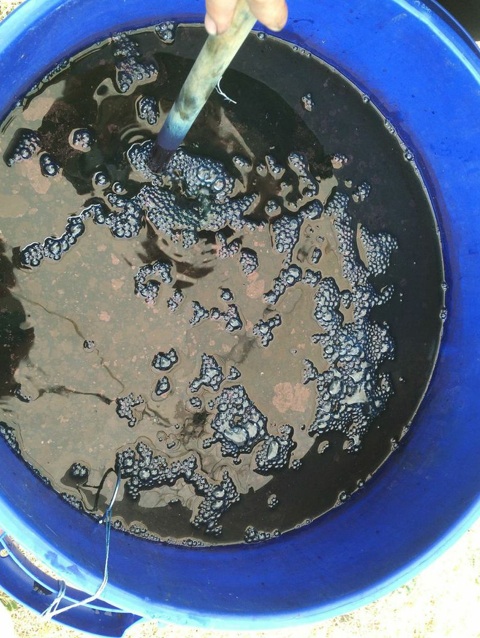Each week, we are emailed with questions from our natural dye community asking simple and complex questions that we thought might be worth sharing. Here are a handful from this week answered by natural dyer in chief, Kathy Hattori, Founder of Botanical Colors:
My indigo stock solution isn’t changing color? What should I do?
If you have an indigo flower and metallic scum and you have done all the above steps and it’s still stubbornly dark, opaque blue, add 1 spoonful of calcium hydroxide, and 1 spoonful of fructose or henna, stir carefully and watch for reduction. Gently heating the solution to about 130F will also speed the reaction. Make sure you are using the same ingredients that we spell out in our recipe.
I often get emails from dyers who are agonizing over their vats, because every vat is different! Sometimes it’s a matter of just dipping to see the result, and then you can make further adjustments if needed; and if you still can’t tell if your stock is working, try dipping a strip of fabric into the jar, counting to 60 and then removing it. If the fabric turns from yellow-green to blue, then your stock is ready and you can make your vat.
I often hear the term “logwood blue” used and see descriptions of a blue color, but all the actual samples I’ve seen are purple. Is there a different process to get blue vs. purple, or is “logwood blue” inaccurate?
It is possible to obtain a blue shade using logwood, and at one time it was an alternative to indigo as it was a cheaper dye. The most common old recipes require the use of copper sulfate as the mordant, which is not a chemical that I recommend as it is poisonous. If I come across a non-toxic recipe for using logwood to obtain a blue shade, we will share it!

